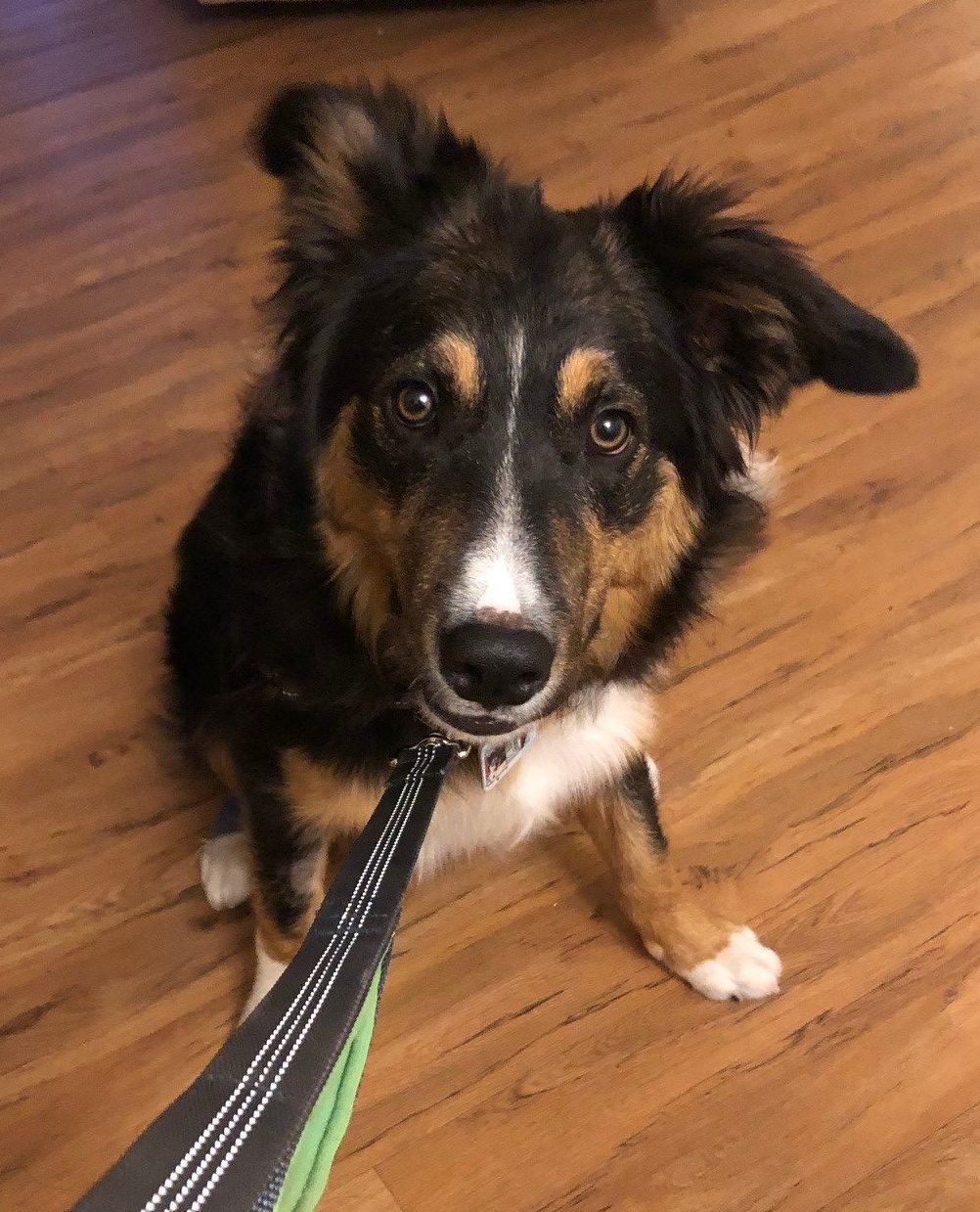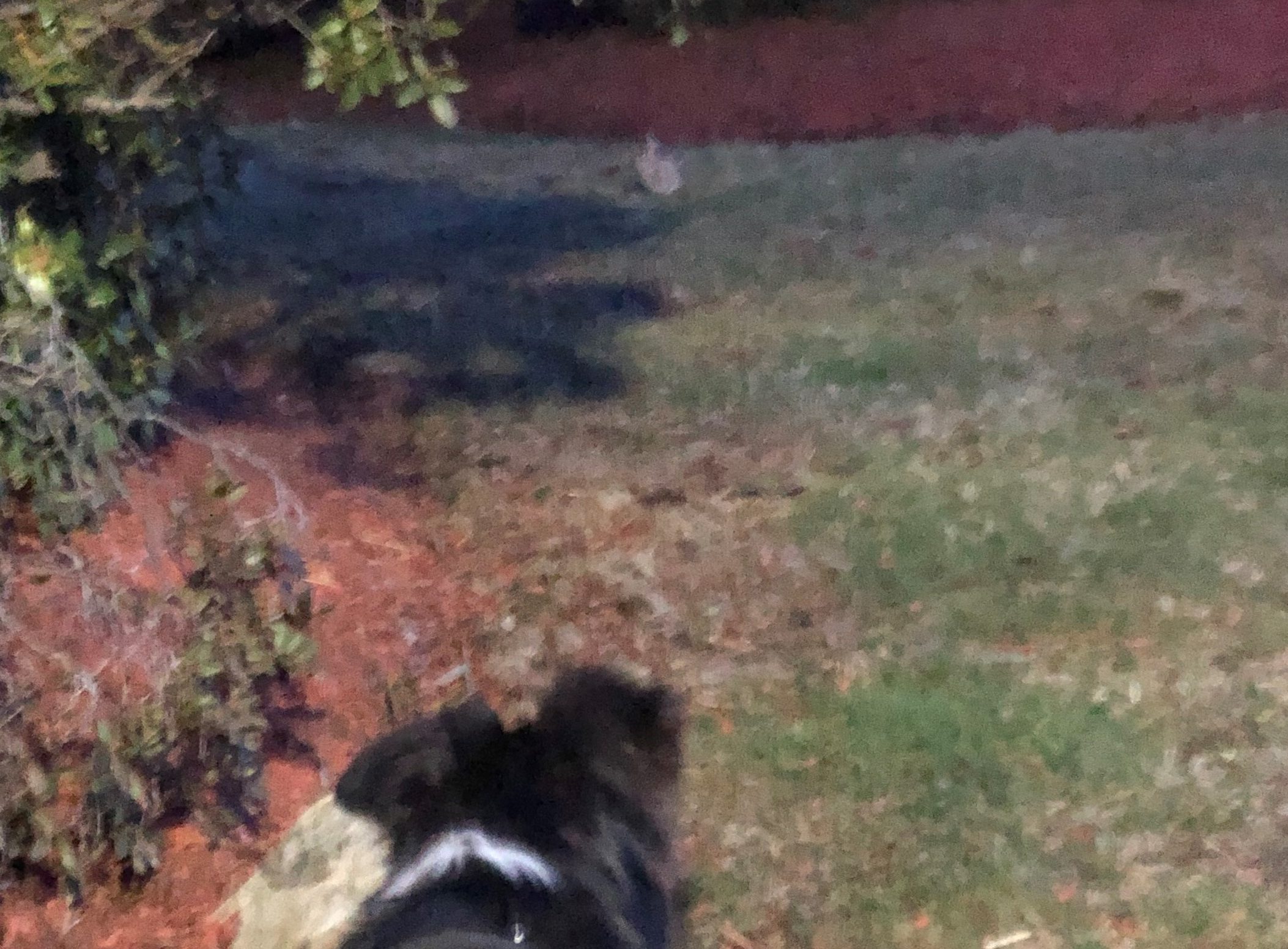Waldo and I are in the apartment. I’m sitting in a kitchen chair, leaning forward. Waldo is chewing on an antler in the living room. “Waldo,” I call. “Come here.” He comes and stands in front of me, looking into my eyes with expectation. “Good boy,” I say and give him a treat. Every obeyed command deserves a treat. “Sit,” I say and give him the hand signal. He sits and gets another treat. “Down,” comes next and when his chest and elbows are on the floor, another treat. “Stand,” I say and he obeys, gets his treat, then sits spontaneously. No treat for that. I point at the spot between my eyes and say, “Look.” As soon as his eyes meet mine, he gets a treat. This is repeated several times a day in different circumstances, inside and out. On the rail-trail, he isn’t as readily compliant – it’s as if he’s thinking, Does “Sit” mean the same thing here as it does at home?
The wisdom is that it takes 500 repetitions for a dog to reliably understand a command, and a lot of consistency on the trainer’s part. We work at it every day and more is to come. Waldo is only beginning to understand that when the old man with white hair and ambling gait makes a specific noise, he expects a specific response. Of course, Waldo also has to believe that doing so is worth his while. It’s a negotiation, a bargaining, as well as a learning experience.
It’s not enough just to get a dog and all my transition-to-retirement problems are solved. Before I got him, I researched the breed and decided I could raise him in a one-bedroom apartment. I looked for and found a good place for us to live. I bought all the doggy accoutrements we would need – a crate, leash, halter, food and water bowls, and so on and on. And that doesn’t stop. When I found that he could jerk the leash out of my hand and run off, I had to find another solution – an Easy Walk Harness. It has a strap that goes over the back and around the chest just behind the shoulders. Another strap goes around the front of the chest, just below the neck, and has a ring where the leash attaches. If your dog tugs on the leash, it spins him sideways, thwarting his forward momentum. They don’t like that, but it is very humane and it works beautifully. I’m learning, he’s learning. I’m adjusting my life to keep him well exercised, he’s (slowly) becoming aware that he is not free to eat the snow shovel, chew on my shoes and tear up the bathroom rug. It all requires reflection and thoughtfulness on both our parts. I am not a control freak. If I could, I would put him outside in the morning, let him do as he pleases, then call him in to interact with me, and to eat and sleep. But that is not possible – we live in a city that would be very dangerous to him if he were left to his own devices. So, we train and I try to find ways to keep him safe, yet happy.
Life with Waldo is not all amusement and pets and pats on the head. He is a very head-strong puppy. He gets his mind set on something and it’s hard to get his attention. It would please me to just watch him, but I absolutely need to get him to respond to me appropriately, especially at those times. Just like when you have a kid (he is one, actually, isn’t he?), there are times you have to be strict and times when you can be playful. Somewhere in all that, the hope is that you can form a meaningful relationship.
Later in the afternoon, we go to a dog park – it’s our first time. The temperature is 65 degrees and the sky is blue with almost no wind. The park is enclosed in chain-link fencing and covers more than an acre. Several dogs of various sizes are already there. I take Waldo off the leash and let him go. He does his submissive wag-waddle up to the other dogs and people, licking at each with the longest pink tongue you can imagine (how does he get all that into his snoot?) and tries to get them all to play with him. His puppyness can be overwhelming for the older dogs and he doesn’t get the “Let’s run around and chase each other” response he’s looking for, but he still gallops around the field and has fun. I try to tempt him to train with his favorite snacks, but he ignores me. That’s okay, being here is more for his entertainment anyway. I try to get close to him so that he doesn’t think that every time I get within an arm’s length, a leash is going to be put on him and he’ll have to do something he doesn’t want to do. He won’t let me get close. I remind myself that he is still a very young puppy and this is just a phase.
It kind of twists me up inside, you know?



